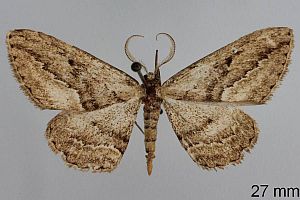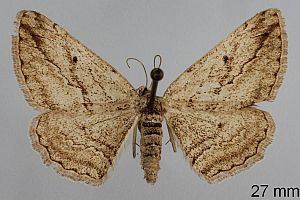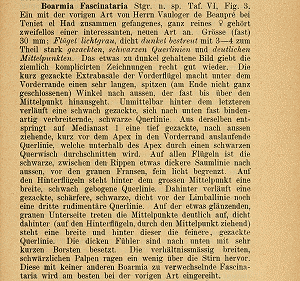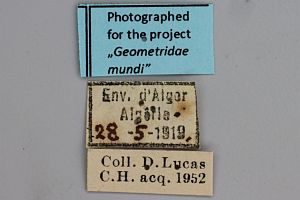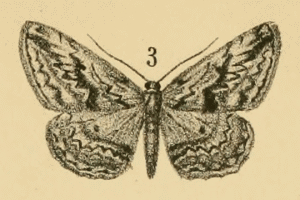2. Diagnose
2.1. Männchen
2.2. Weibchen
2.3. Erstbeschreibung
3. Weitere Informationen
3.1. Andere Kombinationen
- Boarmia fascinataria Staudinger, 1900 [Originalkombination]
3.2. Faunistik
Da die Art nach der [Fauna Europaea] in Frankreich vorkommt, wurde sie auch von uns bis zum 7. März 2017 als europäische Schmetterlingsart geführt. Nach Skou et al. (2017) ist dies aber falsch. Sie erläutern: "E. fascinataria has been recorded from France (Llauro, Department Pyrénées-Orientales by Bérard 1995) and it has been included in the French list of Lepidoptera (Leraut 1997) and in Fauna Europaea (Hausmann et al. 2011). In our opinion the specimen in Bérard (1995) is E. atlanticaria and also Leraut (2009) states in his more recent publication that the species is not yet known from Europe. Expósito Hermosa (2007, p. 270) explains the identity of a male specimen from the Island of Formentera in the Baleares, recorded on 24 August, 1968. The conclusion is vague [...] Due to lack of confirmed records, we propose removal of E. fascinataria from the European list until there is a reliable record. Die Angaben ihrer Verbreitungskarte beziehen sich alle auf Nordafrika (Algerien und Marokko), wo die Art teilweise gemeinsam mit Ekboarmia atlanticaria auftritt. Sie ist also - bis zum Beweis des Gegenteils - aus der europäischen Fauna zu streichen.
(Autor: Erwin Rennwald)
3.3. Publikationsdatum der Erstbeschreibung
Nach der Fußnote der „Inhalts-Uebersicht“ [Digitalisat auf biodiversitylibrary.org] ist Heft 1 mit den Seiten 1-268 und den Tafeln I-IV am 15. September 1899 erschienen und Heft 2 mit den Seiten 269-418, I-XVI und den Tafeln V-IX am 25. März 1900.
(Autor: Jürgen Rodeland)
3.4. Literatur
- Skou, P., Stüning, D. & P. Sihvonen (2017): Revision of the West-Mediterranean geometrid genus Ekboarmia, with description of a new species from Portugal (Lepidoptera, Geometridae, Ennominae). — Nota Lepidopterologica 40(1): 39-63 (06 Mar 2017). [https://doi.org/10.3897/nl.40.10440] [Zugang via pensoft.net]
- Erstbeschreibung: Staudinger, O. (1900): Neue Lepidopteren des palaearktischen Faunengebiets. — Deutsche Entomologische Zeitschrift Iris 12 (2): 352-403 + Taf. V-VII.





